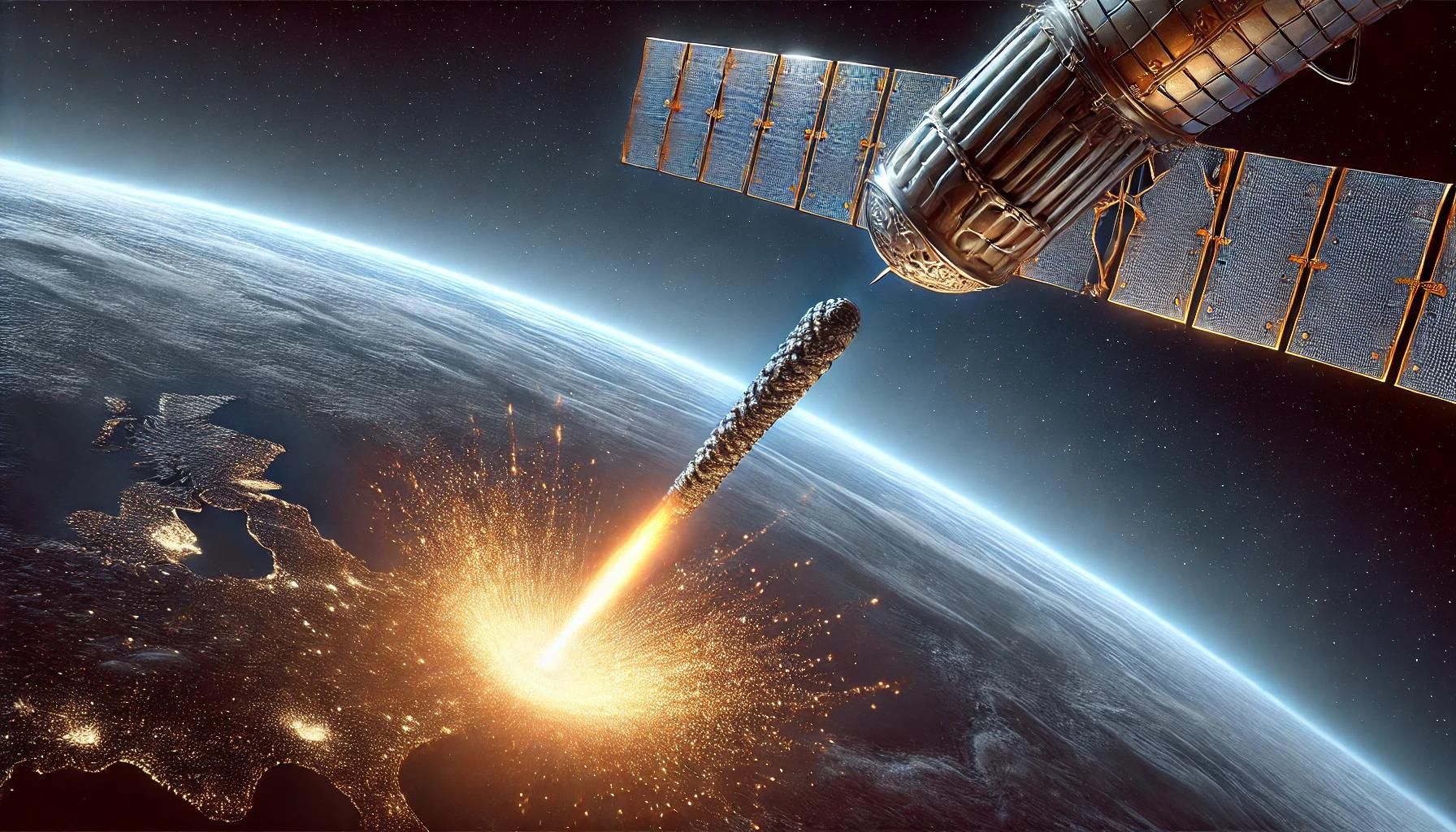Solar Storm Internet Apocalypse Warning by NASA
The Solar Storm Threat: Will an Internet Apocalypse Happen?

The idea of a solar storm causing an “internet apocalypse” has recently gained traction, but how much of it is based on reality? With solar activity on the rise and past events showing the potential for severe impacts, it’s worth investigating the true risks and the current state of preparedness.
Is the Internet Apocalypse Real?

The concept of an “internet apocalypse,” where a solar storm could cause a global internet outage, has gained attention due to sensational headlines and speculative studies. The term originates from a 2021 study by Sangeetha Abdu Jyothi, which suggested that a major solar storm could disrupt undersea internet cables and global connectivity. However, this study only highlighted a potential scenario rather than predicting an imminent disaster. Despite the alarming headlines, experts, including those from NASA, assert that while solar storms can cause disruptions, the probability of a complete internet blackout is extremely low.
Current scientific consensus emphasizes the importance of monitoring and preparing for solar activity but dismisses the notion of an impending internet apocalypse as unlikely. The increased solar activity expected in 2024 or 2025 during the solar maximum will be closely monitored by agencies like NASA and NOAA. These agencies use advanced technologies, including the Parker Solar Probe and AI-based predictive models, to provide early warnings and mitigate potential impacts on Earth’s technology infrastructure. Therefore, while vigilance is necessary, the fear of an internet apocalypse should be tempered with realistic expectations and scientific understanding.
What is a Solar Storm?
Solar storms originate from the sun, consisting of phenomena like solar flares and coronal mass ejections (CMEs). These events can release enormous amounts of energy and charged particles into space. When these particles reach Earth, they interact with our planet’s magnetic field, potentially causing geomagnetic storms. These storms can have various effects, from beautiful auroras to disruptions in satellite communications and power grids.
Solar Cycles and Activity
The sun undergoes an 11-year cycle of increasing and decreasing activity, known as the solar cycle. This cycle is divided into two main phases: solar minimum and solar maximum.
- Solar Minimum: During this phase, solar activity is relatively low. Sunspots, which are temporary phenomena on the Sun’s photosphere that appear as spots darker than the surrounding areas, are few and far between. The Sun’s magnetic field is stable, and the likelihood of solar flares or CMEs is reduced. This period can last several years, providing a temporary respite from the potential dangers posed by solar activity.
- Solar Maximum: In contrast, the solar maximum is a period of intense solar activity. The Sun’s magnetic field becomes highly dynamic and unstable, leading to an increase in the number and intensity of solar flares and CMEs. During this phase, sunspots proliferate, and the solar atmosphere becomes highly turbulent. The frequency and intensity of solar storms can significantly impact Earth’s space weather, making this period particularly critical for our technological infrastructure.
Impacts of Solar Storms
The effects of solar storms on Earth can be both fascinating and disruptive:
- Auroras: One of the most visually stunning impacts of solar storms is the creation of auroras, commonly known as the Northern and Southern Lights. These natural light displays occur when charged particles from the Sun collide with atoms in Earth’s atmosphere, causing them to emit light. Auroras are typically visible near the polar regions, but during intense solar storms, they can be seen at much lower latitudes.
- Satellite Communications: Solar storms can interfere with satellite operations by disrupting the signals they send and receive. This interference can lead to communication blackouts, affecting everything from GPS navigation systems to satellite television broadcasts. In severe cases, satellites can be damaged or even rendered inoperable.
- Power Grids: One of the most concerning impacts of geomagnetic storms is their effect on power grids. The charged particles from a CME can induce powerful electric currents in power lines, transformers, and other electrical infrastructure. These currents can overload the system, causing widespread power outages. In extreme cases, transformers can be permanently damaged, leading to prolonged blackouts and costly repairs.
- Aviation and Space Missions: Solar storms pose a significant risk to aviation and space missions. High-altitude flights, particularly those near the poles, are vulnerable to increased radiation levels during solar storms. This can pose health risks to passengers and crew and disrupt communication systems on the aircraft. Similarly, space missions must account for the potential impact of solar storms on spacecraft and astronauts, as increased radiation levels can damage electronic systems and pose health hazards.
The Current Solar Cycle
The current solar cycle, known as Solar Cycle 25, began in December 2019. As we approach the solar maximum, predicted to peak in 2024 or 2025, concerns about the potential impacts of solar storms on Earth’s technology infrastructure are growing. The increase in solar activity means that we can expect more frequent and intense solar flares and CMEs in the coming years.
The Risk of an Solar Storm Internet Apocalypse
Historical Context: The Carrington Event
The most famous solar storm, the Carrington Event of 1859, provides a benchmark for understanding the potential impact of a severe solar storm. This event caused widespread disruptions to telegraph systems, with sparks flying from telegraph poles and operators receiving electric shocks. The energy released during the Carrington Event was massive, estimated to be around X40 on the solar flare scale, significantly higher than typical solar flares.
Modern Concerns
Today, our dependence on technology makes us more vulnerable to solar storms. A severe geomagnetic storm could potentially damage satellites, disrupt GPS systems, and affect power grids. The most alarming concern is the potential impact on the global internet infrastructure. The 2021 study by Sangeetha Abdu Jyothi highlighted the risk of a “solar superstorm” that could disrupt undersea internet cables, leading to widespread internet outages.
Debunking the Hype
Despite sensational headlines, experts urge caution in predicting an imminent internet apocalypse. Solar storms can indeed cause disruptions, but the likelihood of a complete global internet blackout is low. Heliophysicist Erika Palmerio notes that while solar storms can damage electronic devices, the probabilities of widespread destruction are very low.
Current Efforts and Technological Advancements
Predictive Models and AI
Predicting solar storms remains a challenge due to the complex nature of the sun’s magnetic fields and the interactions between solar particles and Earth’s magnetosphere. However, advancements in artificial intelligence (AI) offer hope. NASA’s use of AI to predict solar storms aims to provide timely warnings, potentially giving agencies up to 30 minutes of advance notice before a storm hits.
The Parker Solar Probe
Launched in 2018, NASA’s Parker Solar Probe is gathering valuable data on the sun’s behavior. By flying closer to the sun than any previous mission, the probe aims to uncover the mechanisms behind solar wind and high-energy particle bursts. This information is crucial for improving our understanding of solar storms and developing better predictive models.
Early Warning Systems
Projects like the one led by Professor Peter Becker at George Mason University focus on creating early warning systems for solar storms. By monitoring solar activity and developing models to predict geomagnetic disturbances, these efforts aim to provide sufficient warning for satellite operators, power grid managers, and telecommunication companies to take protective measures.
The Economic Impact of a Severe Solar Storm
Potential Costs
The economic implications of a severe solar storm are significant. A major event could cause widespread power outages, disrupt communication networks, and damage critical infrastructure. Peter Becker estimates that a severe storm could result in economic losses of $10-$20 billion per day in the U.S. alone. The global impact would be even greater, affecting industries and economies worldwide.
Comparison to Historical Events
Comparing the potential impact of a severe solar storm to the COVID-19 pandemic, Becker suggests that the economic disruption could be larger than the pandemic’s impact. The damage to infrastructure, particularly the internet, could take weeks or months to repair, resulting in prolonged economic hardship.
How to Prevent from A Solar Storm Internet Apocalypse
Hardening Infrastructure
To mitigate the risks of a severe solar storm, there is a need to harden critical infrastructure. This includes reinforcing power grids, protecting satellites, and developing resilient communication networks. While the cost of such measures is high, the potential benefits in terms of preventing widespread disruptions and economic losses are substantial.
Global Collaboration
Addressing the threat of solar storms requires global collaboration. Governments, space agencies, and private companies must work together to develop and implement protective measures. Initiatives like the Space Weather Prediction Center and international conferences on space weather play a crucial role in fostering cooperation and sharing knowledge.
Public Awareness and Preparedness
Raising public awareness about the risks of solar storms and the importance of preparedness is essential. Educating people about the potential impacts and the steps they can take to protect themselves and their devices can help mitigate the effects of a severe storm.
When Is the Internet Apocalypse Going to Happen?
The notion of an “internet apocalypse” is more a product of speculation than an imminent reality. Despite alarmist claims, no definitive timeline predicts such an event. The sun is approaching its solar maximum, expected around 2024-2025, which increases the frequency of solar storms. These storms can potentially disrupt satellite communications and power grids, but the probability of a global internet blackout remains low. Preparedness measures and advancements in solar storm prediction technologies help mitigate these risks, ensuring that an internet apocalypse, if it ever happens, is unlikely to be as catastrophic as some suggest.

How Solar Storms Could Impact Moon Mining Activities

Solar storms, originating from the sun and consisting of solar flares and coronal mass ejections (CMEs), can release vast amounts of energy and charged particles into space. These particles, upon reaching Earth, interact with the planet’s magnetic field, potentially causing geomagnetic storms. Such storms can lead to stunning auroras but also disrupt satellite communications and power grids, raising concerns about their impact on technology, especially during the solar maximum periods of the sun’s 11-year cycle, which is expected to peak in 2024 or 2025.
Moon mining operations are particularly vulnerable to solar storms due to the Moon’s lack of protective atmosphere and magnetosphere. Increased radiation levels from solar storms can damage mining equipment and pose health risks to astronauts. Communication disruptions, power supply interference, and the need for operational delays during solar storms can severely affect the efficiency and safety of moon mining activities. Material degradation caused by radiation can further increase maintenance costs and operational challenges.
To mitigate these risks, several technological countermeasures are proposed, including enhanced radiation shielding, radiation-hardened electronics, real-time monitoring of solar activity, and redundant communication systems. These measures aim to protect equipment and personnel, ensuring the continuity and safety of moon mining operations despite the challenges posed by solar storms. Understanding and planning for these solar activities are crucial for the success of future lunar exploration and resource extraction endeavors.
Balancing Awareness and Preparedness
While the idea of an internet apocalypse caused by a solar storm makes for sensational headlines, the reality is more nuanced. Solar storms do pose a risk to our technology infrastructure, but the likelihood of a complete global blackout is low. By advancing our understanding of solar storms, developing predictive models, and hardening critical infrastructure, we can reduce the impact of these events and ensure a more resilient future.
The new space race to understand and mitigate the effects of solar storms is driven by both economic and technological imperatives. As we continue to explore and harness the power of the sun, we must balance awareness of the risks with proactive measures to protect our increasingly interconnected world.




